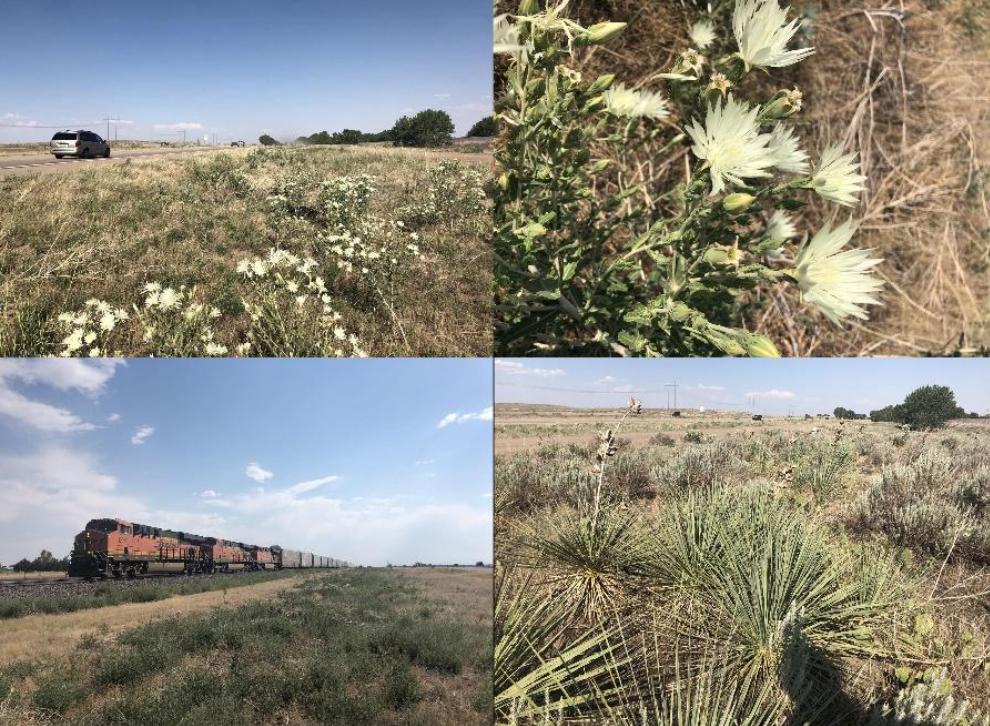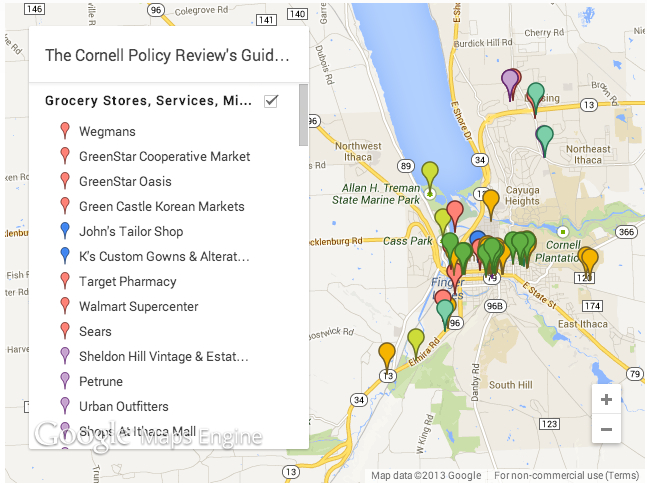Source: James Warren
Written by James Warren
Edited by Tiffany Agard
The Case of the Clean Windshield
If you have been driving for a number of decades, you may have noticed something odd. When refueling at a gas station, you no longer need to spend time scraping hundreds of bug carcasses off the windshield. This experience has become so common that entomologists, scientists who study insects, have coined the term “the Windshield Phenomenon.”[1] The evidence for insect decline is not merely anecdotal either; a team of scientists monitored a natural site in 1989 and then again in 2013 and 2014, to measure insect mass. The findings cataloged an astonishing 80% drop in insect mass in an article published in Science.[2] All types of bugs — bees, butterflies, lightning bugs, moths, hover flies, beetles, and others — are seeing alarming declines in population.”[3] ![]()
What happened to the Monarchs?

Some of this decline has been well publicized. In conservation biology, the concept of “charismatic megafauna” is often used to describe large animals that have a prominent place in the minds and hearts of society, making them useful flagships for conservationists.[4] Similarly, Monarch Butterflies are sometimes jokingly referred to as “charismatic minifauna” in reference to their popularity and importance to conservation efforts.[5] These insects are known for their transcontinental migration in North America, and their decline has alarmed the public. They are threatened by the destruction of natural habitat, and it has been empirically shown that climate change and ecological degradation is having a detrimental effect on their ability to migrate.[6];[7] Their decline has helped symbolize a frightening truth; insects are crucial to the future of the planet, and insects are disappearing.[8]
Restoring habitat for endangered species can be difficult. In many cases, natural habitat has been irreversibly destroyed, with the historic landscape replaced by agriculture or development. Conservationists must fight not only for the preservation of remaining habitat, but also devise ways to make human-centric areas more hospitable to native creatures. One opportunity for this type of conversion is along the thousands of miles of roadway that make up the United States’ National Highway System.[9] The US National Highway System stretches nearly 47,000 miles across all fifty states and is often lined with grasses or other vegetation.[10] The roadsides themselves cover an estimated 10 million acres.[11] These roadside stretches cannot be developed and so remain natural by default. ![]()
Paving the Way
In response to insect decline and in light of roadside potential, the Obama Administration issued a Presidential Memorandum in 2014 titled Creating a Federal Strategy to Promote the Health of Honey Bees and Other Pollinators which, among other things, states that, “the Department of Transportation shall work with State Departments of Transportation and transportation associations to promote pollinator-friendly practices and corridors.“[12] This memorandum paved the way for Colorado House Joint Resolution 17-1029, which designated a section of roadway from the state capital to the state border as “Colorado Pollinator Highway,” and gave regional planners, city government, and highway-adjacent landowners, the ability to reform vegetation along rights-of-way into pollinator-friendly habitat.[13]

The Centennial State is not alone in this effort, in fact, 32 other states have programs designed to allow pollinator-friendly habitats to flourish along roadways.[14] These roadside habitats can also be home to dozens of different types of birds and small animals, which increases the incentive for conservationists to improve these areas.[15] Further, the increased presence of flowers and other native flora beautifies otherwise barren tracts of government property. Additionally, because many of these roadways border farms, which rely on pollinators, there is an additional financial bonus for every mile converted to pollinator-friendly habitat.[16]
Benefaction for Bugs
While these roadside improvements benefit human and insect communities alike, many have difficulty getting funding. In an interview for this piece, Colorado Department of Transportation (CDOT) Environmental Project Manager Jason Roth, who spearheads CDOT pollinator efforts, emphasized that securing funding for these projects is very difficult, as it is often a low priority for the Departments of Transportation, and grants for these projects are few.[17] Nonetheless, his team has already converted sections of the Pollinator Highway, operating under the philosophy of “build it (habitat) and they will come”.[18] ![]()
“Insects create the biological foundation for all terrestrial ecosystems” and, without them, those ecosystems will collapse.[19] Policymakers and conservationists must creatively collaborate to ensure insect survival and recovery.
Perhaps bringing insect habitat to freeways would end the Windshield Phenomenon and usher in a new age of insect-splattered windshields, but this may be a small price to pay for the long-term sustainability of the planet.
Interested in contributing to insect conservation? The Xerxes Society for Invertebrate Conservation does great work and could use your time or resources!
Works Cited
- Brooke Jarvis, “The Insect Apocalypse Is Here,” The New York Times, November 27, 2018, accessed June 21, 2020, https://www.nytimes.com/2018/11/27/magazine/insect-apocalypse.html ↑
- Gretchen Vogel, “Where Have All the Insects Gone?” Science, 2017, doi:10.1126/science.aal1160 ↑
- Ibid. ↑
- Emma Marris, “Charismatic Mammals Can Help Guide Conservation,” Nature News, December 24, 2013, accessed June 21, 2020, https://www.nature.com/news/charismatic-mammals-can-help-guide-conservation-1.14396 ↑
- Tom Philpott, “Researchers: GM Crops Are Killing Monarch Butterflies, After All,” Mother Jones, March 21, 2012|, accessed June 21, 2020, https://www.motherjones.com/food/2012/03/researchers-gm-crops-are-killing-monarch-butterflies-after-all/#:~:text=If any insect species can,such a long-distance migration ↑
- Lincoln P. Brower et al., “Decline of Monarch Butterflies Overwintering in Mexico: Is the Migratory Phenomenon at Risk?” Insect Conservation and Diversity 5, no. 2 (2011): doi:10.1111/j.1752-4598.2011.00142.x ↑
- Hayley Schroeder, Ania Majewska, and Sonia Altizer, “Monarch Butterflies Reared under Autumn‐like Conditions Have More Efficient Flight and Lower Post‐flight Metabolism,” Ecological Entomology 45, no. 3 (December 16, 2019):, doi:10.1111/een.12828 ↑
- Robert G. Foottit and Peter Holdridge Adler, Insect Biodiversity: Science and Society (Oxford: Wiley Blackwell, 2018), 7-14, https://onlinelibrary-wiley-com.proxy.library.cornell.edu/doi/pdf/10.1002/9781444308211.ch2) ↑
- “Highway Finance Data Collection,” U.S. Department of Transportation/Federal Highway Administration, November 07, 2014, accessed June 25, 2020, https://www.fhwa.dot.gov/policyinformation/pubs/hf/pl11028/chapter1.cfm ↑
- “Highway History,” U.S. Department of Transportation/Federal Highway Administration, accessed July 22, 2020, https://www.fhwa.dot.gov/interstate/faq.cfm#:~:text=To Top-,How long is the Interstate System?,41,000 miles at the time)) ↑
- Brianna Borders and Eric Lee-Mader, “Milkweeds: A Conservation Practitioner’s Guide,” Xerces Society, 2014, accessed August 09, 2020, http://xerces.org/publications/guidelines/milkweeds-conservation-practitioners-guide) ↑
- Barack Obama, “Presidential Memorandum — Creating a Federal Strategy to Promote the Health of Honey Bees and Other Pollinators,” The White House, Office of the Press Secretary, June 20, 2014, accessed July 27, 2020, https://obamawhitehouse.archives.gov/the-press-office/2014/06/20/presidential-memorandum-creating-federal-strategy-promote-health-honey-b) ↑
- Colorado General Assembly, Colorado House Joint Resolution 17-1029 (2017). ↑
- “Pollinators,” FHWA, accessed August 09, 2020, https://www.environment.fhwa.dot.gov/env_topics/ecosystems/pollinators.aspx) ↑
- “Roadsides for Wildlife,” Minnesota Department of Natural Resources, accessed August 09, 2020, https://www.dnr.state.mn.us/roadsidesforwildlife/index.html) ↑
- 63. Jason Roth, email conversation with author, August 10-August 17, 2020. ↑
- Ibid. ↑
- Ibid. ↑
- Robert G. Foottit and Peter Holdridge Adler, Insect Biodiversity: Science and Society (Oxford: Wiley Blackwell, 2018), 8, https://onlinelibrary-wiley-com.proxy.library.cornell.edu/doi/pdf/10.1002/9781444308211.ch2) ↑

